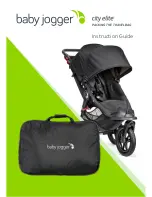
5-14
Window 5
When an attempt to boot is made, the following message is displayed
once IPL is successfully loaded and launched:
ZZZZ YYYY CPUXX
♥
<– line 1 – ’
♥
’ flashes with Z Y field change
BBBBBBBBBBBBBBBB
<– line 2
where BBBBBBBBBBBBBBBB is the model number (for example,
9000/J200).
If the system encounters an FLT code while the system is booting, the
FLT code is interpreted and one of the following messages is dis-
played:
FLT CODE MESSAGES
Meaning of X
1.
Selftest Sys Bd
2.
Selftest cpu X
(0 or 1)
3.
Selftest EISA X
(0 to 4)
4.
Selftest DIMM XX
(DIMM pair 0 to 7)
5.
Selftest Mem Sys
6.
Selftest Graph X
(0 to 2)
7.
Unexp. Trap XX
(0 to 28)
8.
HPMC occurred !
Summary of Contents for Visualize J280 - Workstation
Page 3: ...xii ...
Page 8: ...xiii Preface ...
Page 22: ...1 9 Removable Device Bays 2 Figure 1 3 System Unit with Removable Device Door Open ...
Page 106: ...A 2 ...
Page 139: ...B 29 6 5 4 3 2 1 0 15 14 13 12 11 10 9 8 Figure B 16 Fast Wide Hard Drive Jumper Settings ...
Page 153: ...B 43 Figure B 25 Replacing the CPU Assembly ...
Page 172: ...B 62 ...
Page 194: ...C 22 Figure C 1 Rear Panel SCSI Connectors with Terminators Attached ...
Page 236: ... ...
















































